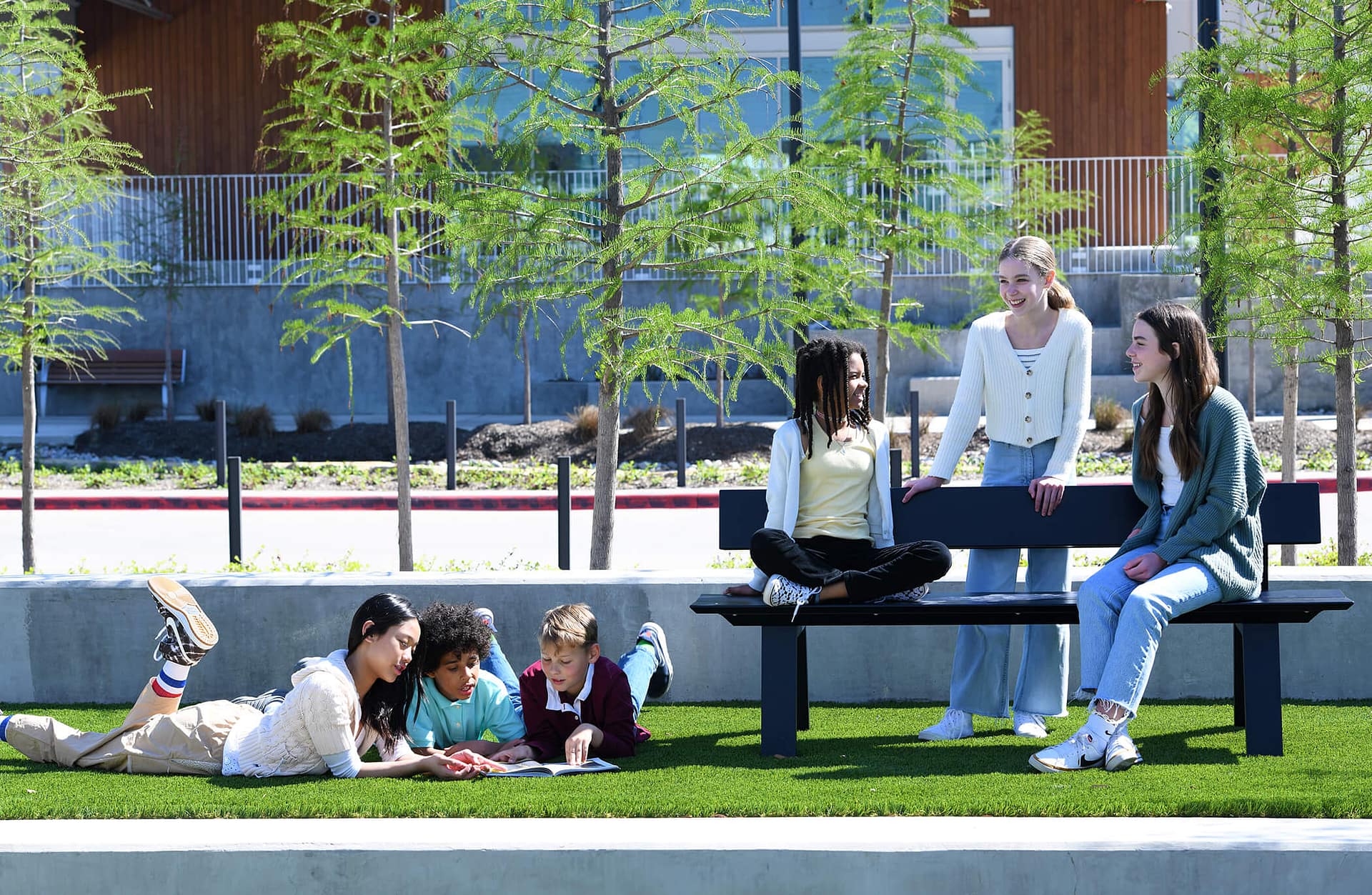Outdoor Learning
Nature's Benefits
Humans crave connecting with the great outdoors. It’s called biophilia, and it’s why we bring nature into built environments, like schools. Studies show the biggest benefits occur when we bring students into nature. Even the smallest amounts of “Vitamin N” matter:
Health
Regular contact with nature can improve students’ physical health, mental wellbeing, and cognitive, social-emotional, and motor functions.
Academics
Research has long shown that natural light and exposure to green spaces boost cognitive development.
Focus
Outdoor learning is a multi-sensory experience with changing stimuli – different sights, sounds, smells, and tactile opportunities. Each helps engage students and can even relieve attention disorders.
Fun
Kids report liking school more when lessons are held outdoors. They’re learning, but enjoying nature just for the joy of it.





Regular contact with nature can improve students’ physical health, mental wellbeing, and cognitive, social-emotional, and motor functions.
The Benefits of Outside Classroom Activities
There’s a lot of science connecting overall student well-being and exposure to nature; it’s good on multiple levels (assuming schools have access to safe, comfortable outside spaces). Here are some obvious plusses compiled from no shortage of online sources:

Health
Research suggests that regular contact with nature, even in a small schoolyard or garden, can improve students’ physical fitness, mental health, academic achievement and cognitive, social-emotional and motor functions.ies.
Learning
Studies dating back to the mid-1990s demonstrated a strong link between natural daylight and higher test scores. More recently, studies show a beneficial association between exposure to green space and cognitive development.
Focus
Outdoor learning is a multi-sensory experience that helps engage students and relieve symptoms of attention-deficit disorder. There are important carry-over effects, too. Ming Kuo’s study with third-graders found that, in some cases, teachers had to redirect students half as often, following an outdoor lesson.
Interest/Curiosity
Teaching outdoors increases students’ interest in a subject and intrinsic motivation to learn. It may also help them retain information longer than regular indoor classes.
Fun
Outdoor learning affects student happiness. Kids report liking their school more when lessons are held outdoors. They’re learning, but they’re also experiencing nature just for the joy of it.
Safety
During a pandemic, outdoor classrooms offer more airflow and space to create more physical distance between students. It also teaches students that learning has no boundaries. It can happen anywhere.
Sustainability
Being in the environment helps teach students how to be good environmental stewards. They can learn first-hand about everything from climate change to composting.
Sense of Place/Civic Pride
Developing a more personal relationship with nature connects students more meaningfully to their community. And, they bring that enthusiasm home to their families.
Product News
Smith System Announces Partnership with Landscape Forms
Smith System Collaborates with Landscape Forms to Launch 'OpenSpaces'—Highly Durable Outdoor School Furniture for Enhanced Learning Experiences
Read moreEducation Trend
Outside Classrooms: Even Small Doses Can Help Counter Nature-Deficit Disorder
Some teachers remain reluctant to take learning outside.
Read moreProduct News
Welcome to Flowform® Outdoor, Smith System’s new upholstered furniture for outdoor learning spaces
“Humans crave connecting with the great outdoors. It’s call biophilia, and it’s why we bring nature into built environments, like schools.
Read more





